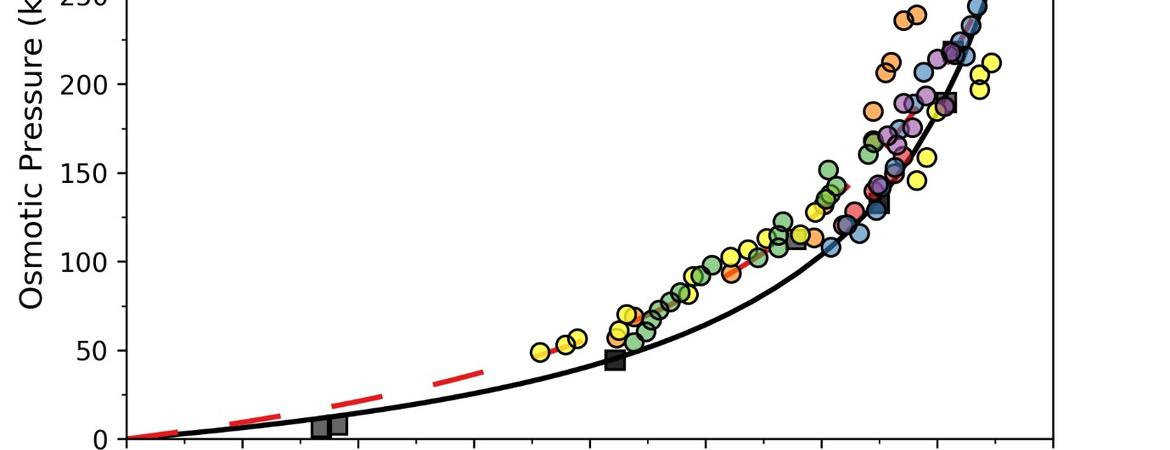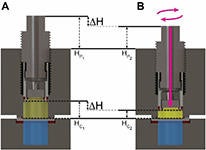

Chris Hale is first author on our manuscript that describes the success of the concentrating osmometer. The manuscript is accepted in AIP Review of Scientific Instruments was published on March 21, 2019. We are excited about this work as it summarizes our development of a concentrating osmometer for the production of osmotic pressure profiles for colloid solutions, especially crowded protein solutions. Thanks to Chris Hale, Devin McBride, Ramsey Batarseh, Jordan Hughey and Kevin Vang for helping to bring this publication to fruition.
Manuscript Abstract
The membrane concentration osmometer coupled with multiple sample preparations has been used for over a century to determine a number of colloidal properties. At the dilute region, this method has been used to determine solute molecular mass. When the solution is proteinaceous, in the intermediate region, the osmotic pressure profile provides the second virial coefficient, useful for estimating protein crystallization and salting out. At the most crowded concentrations, it provides insight on protein hydration and protein-ion interaction. One of the most critical factors in generating the osmotic pressure profile is minimizing the quantity of protein used and reducing the error in preparing samples. Here, we introduce a membrane concentrating osmometer that allows one to measure osmotic pressure over a wide concentration range from a single sample. A test study was performed using the osmotic pressure profile of self-crowded bovine serum albumin (BSA) solutions. The resulting profile was in good agreement with previous data in the literature obtained from multiple sample studies. The osmotic pressure profile was further used with a free solvent-based (FSB) osmotic pressure model to determine protein hydration and ion binding. These results were in excellent agreement with literature values. This concentrating osmometer has several advantages over conventional concentration osmometer for obtaining the osmotic pressure profile for proteinaceous solutions; 1) the amount of protein required is significantly decreased, 2) the potential for experimental error in sample preparation diminishes, and, 3) the time for generating the osmotic pressure profile is substantially reduced.
